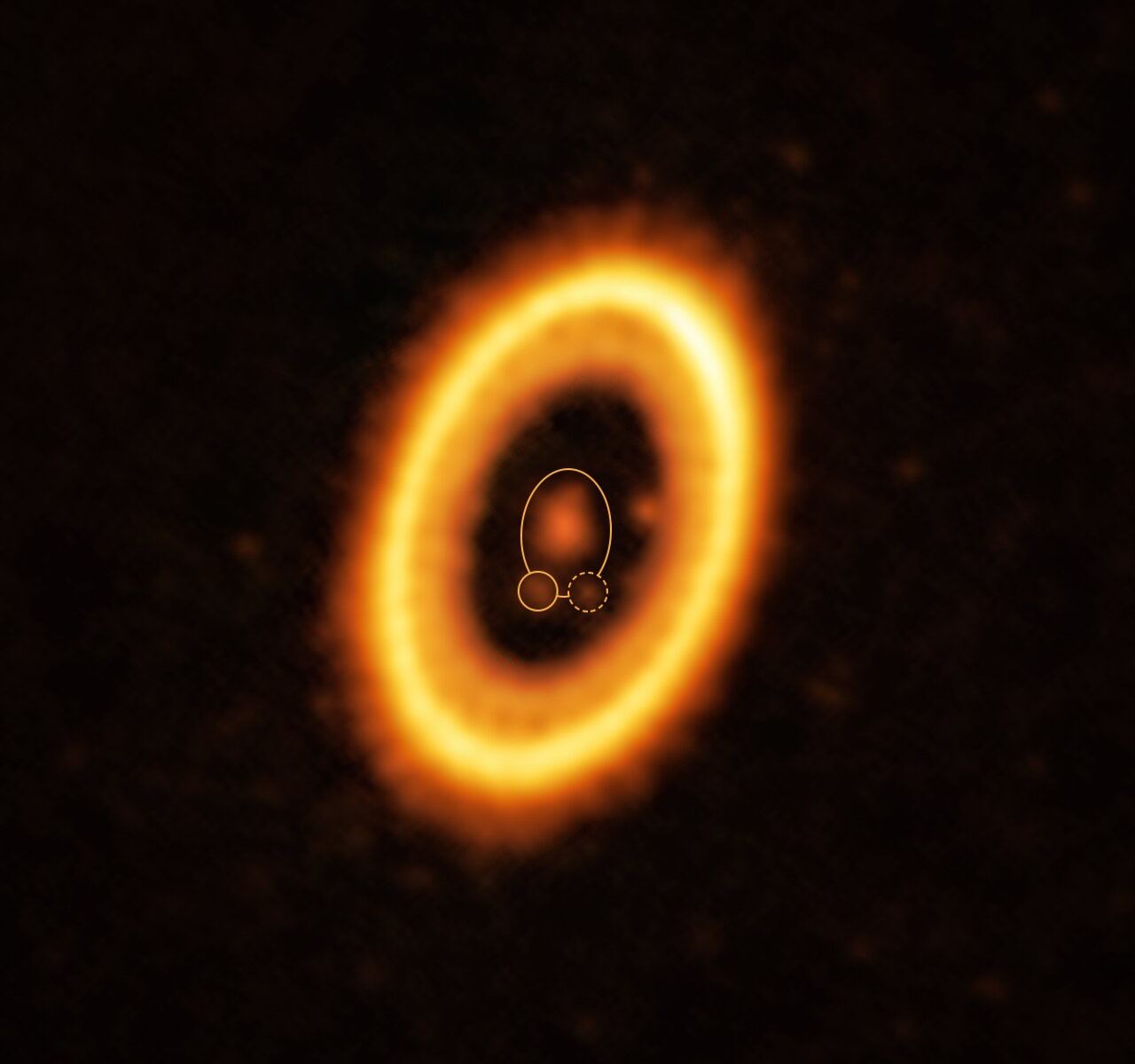It seems like every week, researchers are finding more and more interesting exoplanets. Many of them have analogs in our own solar system – hot Jupiter or Super Earth are commonly used as descriptions. However, there is a feature of a solar system that doesn’t exist in our solar system but might somewhere out in the galaxy – a Trojan planet. Now researchers from the Centro de Astrobiologia in Madrid and colleagues in the UK, EU, and US have found what they believe to be the first possible evidence of a Trojan planet.
So what exactly is a Trojan planet? Astronomers use the term “Trojan” to refer to any body that follows a larger body around in the same orbit around a still larger body (typically a star). Usually, they take advantage of Lagrange points – stable parts of an orbital path where the gravities of the two enormous objects allow the smaller object to maintain its position with little to no additional energy. They are named after the Trojans of Greek mythology fame, as the first of them to be named were named after heroes from Homer’s epic poem The Iliad.
Unfortunately, that naming convention couldn’t be maintained simply because of the sheer number of objects that could be considered Trojans – Jupiter alone is thought to have over 1 million Trojan asteroids larger than 1 km in diameter. But it isn’t the only planet in the solar system to be followed by hangers-on. Neptune has a few dozen, and so far, we’re found two following the Earth itself.
Overall in our solar system, all of the “Trojans” are asteroids – there simply isn’t a giant object that shares an orbit with another big object. But planetary formation theory doesn’t necessarily preclude that from happening. In theory, a solar system could have an “exotrojan” – i.e., a planet that acts like a Trojan in another solar system.
As Jorge Lillo-Box, a senior researcher at the Centro de Astrobiologia, puts it, “so far [exotrojans] have so far been like unicorns: they are allowed to exist by theory, but no one has ever detected them.” But, after combing through archival data from the Atacama Large Millimeter/submillimeter Array, Lill-Box and his colleagues think they might have found one.
Their paper, published in Astronomy & Astrophysics, details their findings in the PDS 70 star system. It is already known to contain two exoplanets – PDS 70b and PDS 70c, both of which are the size of Jupiter. But PDS 70b has a cloud of debris in its orbit, and more interestingly that at one of its Lagrange points, they detected an object with a mass about double that of our Moon.
Credit – Anton Petrov YouTube Channel
Given that the rest is simply a debris field, it is unclear whether this was a situation where there already was another object at the Lagrange point that was then pulled apart by gravitational forces (or a massive collision) or whether we are seeing the early stages of the formation of a new planet. But either way, it seems clear that PDS 70b either has shared or will share its orbital path with an object that we would consider a planet.
However, one of the requirements of being granted the status of being a “planet” is that an object must have “cleared away any other objects of a similar size near its orbit around the Sun,” according to NASA’s website. In fact, this requirement is what demoted Pluto to dwarf planet status. So it’s unclear whether the new exoplanet would actually be considered a “planet” or maybe simply a “dwarf planet.”
Or maybe, like the mythical unicorns, Trojan planets cannot exist at all, not due to evolution, but simply due to the requirements we put on planethood. Such a finding might once again throw the planetary science community into definitional disarray, only to be eventually saved by a commission or other bureaucratic process. But at least for now, it seems clear that somewhere hiding in the galaxy, there are probably a pair of “planets” of similar size that share the same orbit, and that in itself is something to marvel at.
Learn More:
ESO – Does this exoplanet have a sibling sharing the same orbit?
O. Balsalobre-Ruza et al. – Tentative co-orbital submillimeter emission within the Lagrangian region L5 of the protoplanet PDS 70 b
UT – Objects That Share the Same Orbit are Common in the Solar System. But we’ve Never Seen co-Orbital Exoplanets. Why?
UT – A new way to Discover Planets? Astronomers Detect an Exoplanet by Seeing its Trojan Belts


This is interesting for Moon formation models, an orbit sharing protoplanet is a candidate for the Theia impactor that matured Earth and spawned the Moon.
The article raises another interesting point. The astronomers that discovered the classification criteria published before there was an issue. The issue was not specifically the classification, but the impossibility of naming every debris object (apparently it is the same for Trojans). Luckily there is a huge cluster effect from the criteria, with a factor 1000 between planets and debris bodies like the Kuiper Belt Object Pluto. Like Ceres the Pluto debris object was first misclassified among astronomers.
The astronomer planet definition is for planets, formally only this system but as astronomers already discovered useful for exoplanets. This inadvertent point of that definition comes out here, the protoplanetary disk have not yet stabilized so it is a transitional state towards a mature system. But in immature systems we can now identify growing planets. A mature system will have a stabler configuration, so they can be used for statistics on astronomical planets (which differ from astrophysicist or geophysicist different definitions of planets). These things observed here must likely be handled differently.